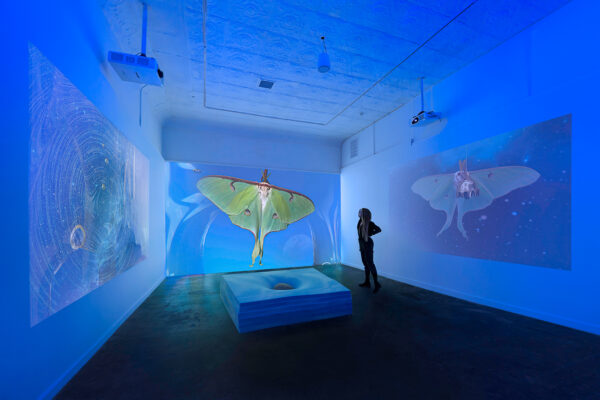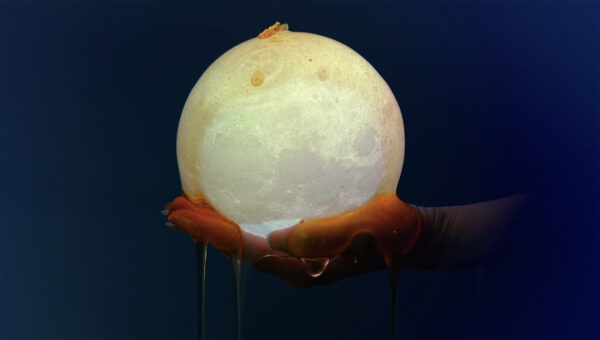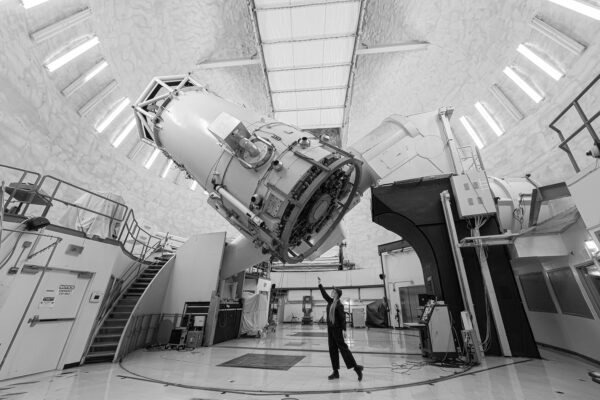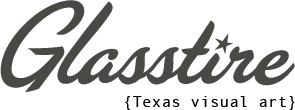There have been wild dust storms in West Texas — a howling force that sometimes obscures the view during my commute between Marfa and Alpine, where I teach at the university. Normally, the drive through the mountain pass offers wide-open skies: The sun rises in soft pastels and sets in neon horizons — a liminal dream. These storms have been steady, carrying an uneasy edge of possible collapse, or simply the perennial performance of spring in the high desert.
In Marfa, most of us have been bumbling about in the dust these days, asking one another, “Has it always been this bad?” There’s something about the haze or obscurity of a dust storm, a dream, surrealism. I recently led an introductory discussion on the Surrealist movement. Many students are just as invested in rodeo or football as they are in expanding their understanding of art. Through such pluralism, we find ourselves in unusually brilliant places.
Surrealism, as a movement, was both a cultural rebellion and a psychological exploration. It created a language in art that remains relevant today: dream logic, symbolic layering — what reasoning cannot explain in reality, we imagine.
At night, the wind slows and the skies clear. Spring has arrived with the same gust, and I’ve arranged to speak with my friend and artist, Virginia L. Montgomery. Her work is currently on view as part of a group exhibition, Elemental Currents — Material, Memory, and Myth, at Ballroom Marfa, alongside that of Christopher Blay and Laddie John Dill. As a whole, the show unfolds like a surreal sequence, playing with what obscures the reality of sight, offering instead a dream window into imagined futures.
The following is a conversation with Montgomery in response to her work in the exhibition. This conversation has been edited for brevity and clarity.

Virginia L. Montgomery, “Elemental Currents: Video installation,” 2025, 4K digital video, sound, and sculpture. Image courtesy of the artist and Ballroom Marfa
Mo Eldridge (ME): The exhibition as a whole is described as an immersive convergence of human relationships, technology, the landscape, and imagined futures. I will say that convergence is very felt.
The first work I came across of yours was in the hallway leading to the south gallery: a framed drawing titled Equations drawn by astrophysicist Richard Anantua. I later learned the equation is related to your memory foam and stone sculptures. Could you tell me about that connection?
Virginia L. Montgomery (VLM): I am always excited to talk about the intersection of metaphysical contemporary art and astrophysics. So the drawing is a remnant of an open conversation I had with my friend and black hole scholar Dr. Richard Anantua. I was showing him images of the stone-on-foam sculptures I’ve been producing, where I work with local stone material and carve it into huge, sensual blobs, which I then place upon a thick pile of blue memory foam. That action of placing the heavy stone upon the surreal, buoyant material of the foam creates this unusual gravitational mediation. Dr Richard was intrigued to see that my artwork was a functional model of one of Einstein’s descriptions of space-time. Specifically, how matter warps when in proximity to a black hole.
ME: The astrophysics equations really changed my experience of the sculptures. As a viewer there is a simple initial meditation with materiality: the softness, the hardness, the weight, and how the weight is resting, just as our bodies do, in space and time. It’s this beautiful and very simple confrontation of sensation. Then, with the equation, you imagine the universe expanding above us.
VLM: Right! And what I love is that those same laws of physics that are being enacted within the stone-and-foam sculptures are the same laws of physics that permeate our very cells and that permeate the skies above us. My interest as an artist creating the stone-on-foam sculpture is to offer a sensory, tactile experience to viewers so they may have a haptic experience with space-time.
One fun fact about memory foam is that it came from NASA research. Memory foam was invented by NASA researchers looking for ways to keep astronauts protected during spaceflights. Memory foam is a material that can absorb shock waves to literally cocoon the human body as it exits the atmosphere.
ME: So fascinating.
VLM: It is a material that from its inception was about mediating the human body in a way that is about cocooning and cradling. Then, in time, memory foam made its way to the consumer market, where the product was given the cute name of “memory foam,” which is a bit ironic, because memory foam is a quite selfish material. It only remembers itself. I think memory foam is such a beautiful and strange material, but again, it’s just another kind of ubiquitous everyday material found in mattresses and pillows. But I love that memory foam has its origins in NASA spaceflight research.

Virginia L. Montgomery, “Honey Moon in Blue,” 2025, image still from 4K digital video with sound, 6 minutes. Image courtesy of the artist and Ballroom Marfa
ME: I love that you talk about the name, memory foam, because while moving through your work at Ballroom Marfa, there is an element of repetitive symbols and words in titles. For example, there are terms like: honey, moon, luna moths, and gestures, like stones that are being held, suspended, or gesturally interacted with. I was thinking about the role of repetition and words in your titles. Could you speak to that in your work?
VLM: Within my work, there is a linguistic repetition around play and material naming. In Elemental Currents, I have a new video titled Honey Moon in Blue. The video is a live-action, six-minute film that depicts my hand holding a small, glowing 3D-printed model of the moon. Then, above my hand and the moon, a stream of liquid honey is pouring down upon the moon. The total effect creates an elegant, but hyper, ASMR experience, grounded in a playful linguistic misinterpretation of the phrase: “honey moon.”
And through my work in Elemental Currents, there are many small moments of this kind of whimsical mis-interpretation of reality. Which, maybe in turn, hints at reality being a lot more complex and nuanced than we think. As someone who is neurodivergent (specifically, I am on the autism spectrum and have hearing-motion synesthesia), I sometimes interpret the linguistic world in a very literal way because I think solely in symbols and pictures. And this means my brain often generates many comedic misinterpretations of everyday linguistic phrases like, honey moon.
The silver lining to my neurodivergence is that I can intuitively create surrealist-style artworks while still engaging hard-science themes like astrophysics. I believe that the power of the autistic mindset should be celebrated. In my art practice I want to cultivate space for my autistic mind to fluidly integrate elements from my inner dream world with the linguistic world and the material world, and to let all of these realities swirl together.

Virginia L. Montgomery, “Luna Moth Cocoon Meets the 107-inch Telescope,” 2025, photograph, 40 x 28 inches. Image courtesy of the artist and Ballroom Marfa
ME: Yes, the swirling of realities is something that I felt. I had so many joyful moments of smiling and pausing with your work, one of which was with Luna Moth Cocoon Meets the McDonald Observatory 107in Telescope.
VLM: Yes! The 107-inch Telescope at the McDonald Observatory in Fort Davis is a historically significant instrument in lunar research because it helped discover the exact spatial proximity between the Earth and the Moon in 1969. Isn’t that incredible? Without this telescope, we would not know how close we are to the moon (which is currently around 238,900 miles and growing).
This large black-and-white photograph in Elemental Currents is a part of my ongoing performance art series, Luna Moth Meets the…, which documents me visiting historically significant lunar research equipment and introducing a live luna moth cocoon to the devices. This image depicts me holding a tiny luna moth cocoon up to the gigantic lens of the McDonald Observatory’s massive telescope. My interest in enacting this performative gesture comes from the metaphysically romantic desire to help a luna moth gain access to the thing she loves most: the moon.
It’s an absurd quest — to help a luna moth go to the moon — but part of this artwork is about role-modeling an uncanny type of love by literally showing the lengths we will go to help the ones we love. My inspiration for this performance piece also came from my experience raising, hatching, and filming luna moths over the years. Luna moths are truly obsessed with moonlight. So naturally I thought, “How can I help a luna moth get closer to the moon?” So much of this work is about yearning, and the metaphysics of desire. Hope is a mysterious force that can’t be entirely explained by science.
ME: I was thinking about that type of love and yearning in your installation. Especially because of the soundscape. The bells, and the sounds of the luna moth hatching from its cocoon, read as a type of reaching or yearning. Where is she going? What does she love?
VLM: Yes, the sound design amplifies the emotionally uncanny quality of the whole installation. When I’m creating these sonic environments, I do think about what sound could signify the feeling of emotional tenderness, or what sound could trigger the feeling of being reincarnated. These are questions with no specific answer, but I think about them in the studio when I’m recording delicate foley sounds of things like tiny tinkling bells and imagining the sonic landscape of the afterlife.
ME: Fascinating. In the installation, the viewer enters this room, where there are three screens and a central sculpture. I found myself transfixed on this bright sky shifting above the observatory, starlight, and lights flickering through the landscape. What was it like for you to work with the McDonald Observatory?
VLM: It was such an honor to live and work onsite at the McDonald Observatory as an artist-in-residence in December 2024. I was there to learn astrophotography, to research the telescope, and to work at night to create night sky time-lapse imagery. While I was there, I stayed at this unique housing facility for researchers called The Astronomer’s Lodge. It was so charming. Everyone slept during the day, because they worked at night. And The Astronomer’s Lodge had hallways that were exclusively illuminated by red lights to help preserve your night-sky vision.
ME: What sounds greeted you out there?
VLM: At the top of the McDonald Observatory at three in the morning, I’d hear the wind howling through the grasses and the deep whorls of the telescopes rotating positions every few hours. It was a bit startling when it first happened, because I was in an almost trance-like state while staring at the Milky Way watching for shooting stars in the pitch-black darkness. And then suddenly, all around me, I could hear and feel telescopes rumbling. It’s a wonderful analog soundscape. Just imagine: big, powerful, machines slowly rotating in the dark.
ME: The whole show is this intersection of technology, land, and human experience. You are putting the lens on the night sky. One of the things I love about living out here in West Texas is the vast sky. Light shifts in this incredible way; it’s almost unreal. Also, it’s so quiet. When I first moved to Marfa, I wrote a letter to a friend and commented on how strange the sound moves. I remember being taken aback by how I could hear my own heartbeat and the sound of birds flying. The sound of wings would echo distance in a way that had me still.
VLM: I absolutely agree. West Texas is this uniquely vast landscape that permits both light and sound to operate differently.
ME: There were moments in the installation, looking at the way you captured the movement of the night sky, that had me smiling, in awe. It is an experience unlike anywhere else. I remember seeing my first falling star — not a shooting, but a slow falling star. There is a moment in your video where a star slowly falls. And I was like, “There it is.”
VLM: Absolutely. Being out there with my astrophotography equipment, I was able to witness so many small meteor showers streaking across the sky. It is the type of cosmic phenomenon that’s occurring above us all the time, that our eye isn’t always sensitive enough to pick up. But when you start to view the night sky through a hypersensitive camera lens, all this light comes alive, and you realize it is really active above us. There are hundreds of satellites moving at all times, and the ISS space station, too. In one of my videos, it looks like a little speck of light — like a shooting star — but that is, in fact, a space station traversing the screen.
It’s very apropos that we’re talking about the night sky at this exact moment, because we are coming to the very end of International Dark Sky Week. It’s the time of the year that if you live close to, or happen to be inside a dark sky preserve like West Texas, astronomy groups will have public programming to educate and inspire people to hone in on light pollution, and also notice the beauty that is above us.
ME: You mentioned surrealism and metaphysics. Can you talk about how these show up in your work?
VLM: Growing up in Houston, the Menil Collection was my first introduction to art, and I always loved artists like Leonora Carrington, Louise Bourgeois, Max Ernest, and Rene Magritte. Surrealism created the primer for what I thought art was: a hybrid space that engaged both the experience of one’s inner and outer worlds, simultaneously.
The part of metaphysics that inspires me the most is panpsychic metaphysics, which proposes this wild idea that consciousness itself is a force that permeates everything, much like gravity is a force that permeates every atom. When I’m in the studio making art, I adopt a panpsychic framework to view the things around me — like my bells, stones, and cameras — as agential collaborators building a dreamworld with me.
ME: As a viewer it does feel like an invitation to step into your dreaming world.
VLM: Oh, thank you!
ME: And then I have one fun question for you. Have you seen the Marfa Lights?
VLM: Yes, I have seen the Marfa Lights! I believe they’re a type of atmospheric phenomenon, like ball lightning. That’s my hypothesis. What’s your hypothesis?
ME: I have no idea what they are. I just know I have seen them and I believe that they are here.
VLM: Me too. Who knows if the Marfa Lights are a natural phenomenon or a spiritual phenomenon, but I do agree that they’re real.
ME: There’s definitely this consistent feeling, every time I witness a sort of a Marfa Lights moment, where I’m like, “Well, let the mystery be.”
VLM: I love that as a closing testament: “Let the mystery be.” That sentiment beautifully summarizes our role as artists. We’re here both to cultivate mystery and to let it be.
Elemental Currents — Material, Memory, and Myth is on view at Ballroom Marfa through June 8, 2025.


